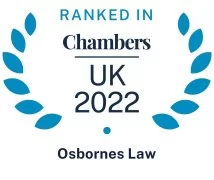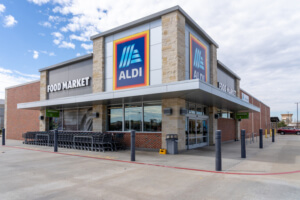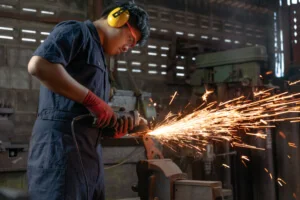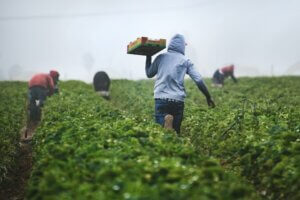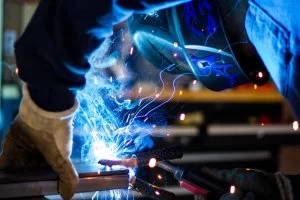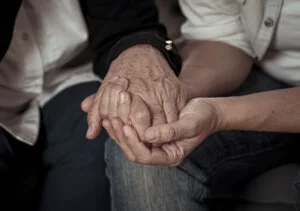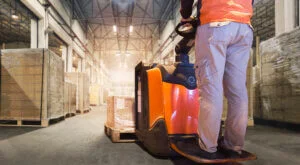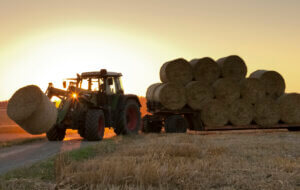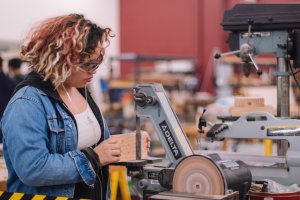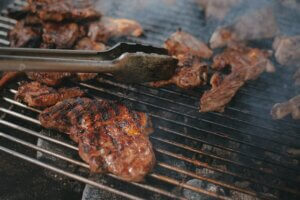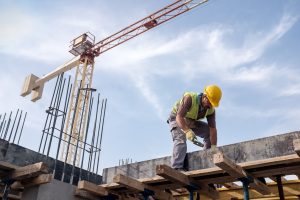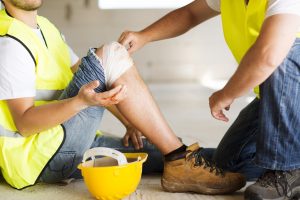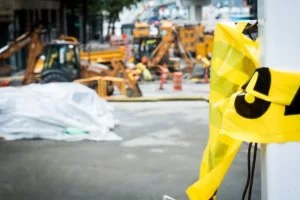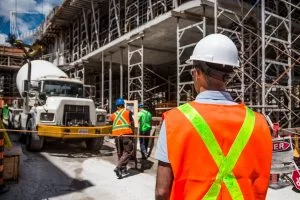Tree Surgeon Accident Claims
Tree Surgeon And Gardener Accident Claims
Our lawyers will guide you through the process of making a Tree Surgeon Accident Claim
“Fielding a first class, very well resourced team of litigators, the personal injury department at Osbornes is rated for its diverse workload of complex, high-value injury claims.”
“They punch well above their weight. The quality of service they provide equals that of any of the larger top-name firms in this area.”
Introduction to tree surgeon claims
The job of a tree surgeon, or arborist, can be rewarding and interesting, but it demands training and experience. The risk of serious injury is high because of three particular elements of the job:
- Work at heights, often in an unstable environment
- Use of cutting equipment such as chainsaws, at height
- Falling trees and branches
1400 tree surgeons have been injured in the last 9 years (HSE figures). Not a large number compared with other industry sectors, but significant given the small numbers working in this field.
In one accident reported in the press, a tree surgeon slipped whilst cutting a branch 50 ft up a horse chestnut tree and cut his neck and arm with his chainsaw. He lost six pints of blood before receiving emergency hospital treatment to save his life. Others are not so lucky. On average three tree surgeons are killed every year in work accidents.
Tree surgeons working at height
Work at heights is the major cause of industrial injuries. What makes arboreal work at heights, particularly dangerous is that trees are not entirely predictable structures and of course, no two trees are the same; the jobs of felling, crown lifting or thinning, and reducing or pollarding require particular approaches and proper planning. A dead or diseased tree will respond to cutting differently from a living tree and a large tree will react differently to a small one. A wind-felled tree will act differently from one that has been chopped down. Only through training and experience will the operative properly understand and cope with the risks created by different situations.
Specialist training to harness & use machinery
The job of roping and harnessing tree surgeons as they go about cutting and dismantling a tree is a skilled one and again needs training and preparation.
Chainsaws and stump grinders are essential to the job of a tree surgeon and must only be used after full training and in conjunction with proper personal protective equipment (PPE).
Duty of care on employers
The law imposes duties on employers to take reasonable steps to ensure that their workers are provided with the necessary PPA and other equipment (eg hard hats, harnesses and ropes, rigging and bracing equipment, boots and ladders). There are also regulations governing work at heights (The 2007 Work at Height Regulations) which require that the work is properly planned and assessed and that workers are properly trained and supervised.
Tree surgeon claim case study
Claim settled for £850,000
Osbornes acted for a tree surgeon who suffered a brain injury whilst carrying out his job. He was experienced in most aspects of the work but was not familiar with the particular requirements with wind-felled trees, and as he went to cut off the branches of one such tree with a chainsaw he misjudged the elasticity of a branch and as he cut through the wood the branch sprang forward hitting him on the head and rendering him unconscious. The damage caused permanent symptoms and after court proceedings, our brain injury lawyers secured an £850,000 gross settlement.
Risks faced by gardeners, landscapers and groundsmen
The job of a gardener, landscaper or groundsman is not normally as hazardous as that of a tree surgeon, although they do sometimes need to work at heights and they do need to work with cutting, vibrating tools and other machinery. They certainly carry out a lot of manual handling work with heavy loads and often deal with chemicals and other toxic substances. So they too have the benefit of the regulations designed to protect those who face the risk of particular injury in their line of work: the Manual Handling Operations Regulations 1992, the Workplace Regulations 1992, the Management of Health and Safety at Work Regulations 1999 and the Control of Substances Hazardous to Health 2002.
What types of injuries can I claim for?
We have helped clients claim compensation for a wide range of injuries including:
- Ankle Injury Claims
- Arm Injury Claims
- Back Injury Claims
- Elbow Injury Claims
- Finger Injury Claims
- Hand Injury Claims
- Hip Injury Claims
- Knee Injury Claims
- Leg Injury Claims
- Neck Injury Claims
- Shoulder Injury Claims
- Wrist Injury Claims
Why choose Osbornes Law for tree surgeon claims?
At Osbornes we have built up over the years a wealth of experience in dealing with tree surgeon and gardner accident claims.
The benefits of choosing Osbornes Law include:
- Support in every aspect of your claim – our service goes beyond just handling the legal aspects of your claim. We work with a network of healthcare professionals, charities and support groups to ensure that you are connected to the best possible services while we fight for your right to compensation.
- Expertise – our accident solicitors have extensive experience in handling claims involving all types of injuries. We understand the complexities involved and know how to build strong, evidence-based cases that maximise your chances of success.
- Personalised service – Our team is always available to answer any questions you may have and provide support every step of the way.
- No-win no-fee – injury claims can usually be funded through a no-win no-fee agreement. This means that you will not have to pay any upfront fees or legal costs unless we win your case.
Client Stories & InsightsVIEW ALL
- 9.7.2025
Warehouse Worker Fights Aldi’s False Dishonesty Claims
Aldi’s worker suffers ‘mental torture’ after the supermarket giant falsely accuses him of lying In a shocking case that...
Read more - 5.6.2025
Migrant Workers Face Greater Risk of Workplace Accidents
Why migrant workers face greater risk of workplace accidents? Foreign workers in the UK are statistically more likely to experience...
Read more - 22.10.2024
£75,000 Settlement for Head Injury at College
Accident During a College Class Eloise Mears, Solicitor at Osbornes Law, represented a student who sustained a head injury while...
Read more - 26.4.2024
Head Injury Following Slip at Work
Client who slipped at work obtains a good settlement Laura Swaine recently settled a work accident claim for a client...
Read more - 26.4.2024
Six-Figure Settlement for Head Injury at Work
Settlement for a client injured at work Laura Swaine recently settled a claim for a client who was injured while...
Read more - 14.3.2024
Strawberry Picker Receives £10,500 After Accident at Work
Incident in the Strawberry Field Our client was at work, walking in the field and carrying cages with strawberries, when...
Read more - 13.3.2024
Accident at Work Compensation Examples
Factory Worker Receives £14,000 for Hot Water Burns Our client was working in a food producing factory. He was injured when...
Read more - 13.2.2024
5-figure Payout for Death of Hungarian Lorry Driver
Hungarian lorry driver tragically dies Siobhan McIvor, a Partner and Personal Injury lawyer, has successfully settled a fatal accident compensation...
Read more - 6.12.2023
Accident at work claim settled for Romanian driver
Siobhan McIvor, a Partner in the Personal Injury Department, has successfully settled an accident at work claim arising from an...
Read more - 5.12.2023
£75,000 Compensation After Accident Leads to Blood Clot
£75k Settlement Following Injury at Work Serious injury lawyer, Blanca Diego Casas recently represented an individual who suffered serious medical...
Read more - 23.11.2023
Accident at work claim settled for Hungarian factory...
Forklift trucks are a common cause of warehouse injury claims due to human error on the part of the forklift...
Read more - 11.4.2023
£250,000 settlement for client injured in forklift accident
Sophie Davies, a specialist personal injury lawyer at Osbornes Law, recently represented a client who suffered life-changing injuries following a...
Read more - 17.11.2021
£100,000 settlement for tripping at work
Osbornes Law secures £100,000 settlement for Hungarian woman who tripped over a shopping bag at work Siobhan McIvor, a Partner in...
Read more - 17.11.2021
£165,000 settlement for factory accident
Siobhan McIvor, a Partner in the Personal Injury Department of Osbornes Law, has settled a £165,000 accident at work claim, with...
Read more - 31.8.2021
Kitchen Accident Claim
Our client, a hospitality supervisor instructed Osbornes after he slipped and fell on oil and food debris on the floor...
Read more - 18.5.2021
Construction Site Accident at Work
Our client suffered numerous fractures to their left leg requiring surgery following a work accident on a construction site. He...
Read more - 18.5.2021
Compensation for Amputation on Construction Site
Our client worked as a carpenter/bricklayer on a building site at a residential property in North London. He was...
Read more - 15.10.2020
Fatal Accidents In The Workplace
A new article from the BBC takes a looked at fatal accidents at work. The report states that since 1981, there...
Read more - 2.9.2020
Lasting damage to ankle following construction accident settles...
Sam Collard, a Partner in the Osbornes’ catastrophic injury team, recently settled a construction accident claim for a Romanian man...
Read more - 30.7.2020
Self Employed Accident at Work Claims
Understanding self employed workers’ rights As a self-employed worker, understanding your rights after a workplace accident is crucial. While your...
Read more - 13.8.2019
Fatal Accident Conviction Highlights Health & Safety
Construction bosses guilty of gross negligence manslaughter Conrad Sidebottom, 46, and Richard Golding, 43, were jailed for their part in causing the...
Read more
Our Personal Injury Team View the whole team
Rob Aylott
 Partner
Partner
Personal Injury SolicitorsSam Collard
 Partner
Partner
Personal Injury SolicitorsSophie Davies
 Partner
Partner
Personal Injury SolicitorsLaura Swaine
 Partner
Partner
Personal Injury SolicitorsNicola Hall
 Senior Associate
Senior Associate
Personal Injury SolicitorsAndrew Middlehurst
 Senior Associate
Senior Associate
Personal Injury SolicitorsView the
whole team


